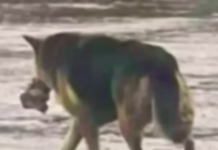Table of Contents
ToggleLast Updated on November 19, 2023 by Fumipets
Unlocking Canine Intelligence: How Dogs Perceive the World
Smart Pups Make Smart Moves: Decoding Canine Cognition
In a fascinating revelation, animal behaviorists from the Department of Ethology at Eötvös Loránd University in Hungary have uncovered the intricate ways in which dogs perceive the world around them.
The study, recently published in the journal Ethology, delves into the cognitive processes of our four-legged friends, highlighting a correlation between a dog’s intelligence and its perception of objects. Let’s explore this canine cognitive journey.
Understanding Canine Cues: Pointing Perspectives
Deciphering the Meaning
When a human points to an object, dogs, much like toddlers, take it as a cue to direct their attention. The study suggests that, irrespective of the person’s intention, the interpretation differs between children and dogs. This unique phenomenon underscores the intricate world of canine cognition.
Smarter Dogs, Sharper Perception
The research found that for “smarter” dogs, the appearance of an object holds as much significance as its location. This hints at a cognitive similarity between intelligent dogs and humans. The study involved behavior tests with 82 dogs, evaluating their spatial awareness through tasks like treat location learning.
Behavioral Tests: Unraveling Canine Spatial Awareness
Left or Right: A Treat Tale
In one test, dogs had to discern whether a treat was on the left or right side. Results showed that smarter dogs were quicker at remembering object placement than their counterparts.
Plates and Preferences
Another test involved two types of plates—a white round one and a black square one. Dogs learned faster when the treat was placed on the left or right rather than in the center. This showcased their ability to remember object placement over object features.
Resilience in Learning
The study also revealed that smarter dogs showcased resilience in challenging learning situations. They could adapt and overcome biases, proving their cognitive flexibility.
Visual Abilities: A Canine Mosaic
The Head Shape Connection
According to Zsófia Bognár, a researcher in the study, the visual abilities of dog breeds are linked to their head shape. Dogs with shorter heads (brachycephalic) develop vision resembling that of humans, with a sharper and more focused perspective.
Cephalic Index: A Measure of Vision Quality
The study utilized the “cephalic index,” calculated by dividing the width of the skull by its length, as a measure of vision quality. Shorter-headed dogs exhibited higher indices, implying superior vision quality.
Unraveling the Canine Enigma: Why Do Dogs Behave This Way?
While the study hints at possible reasons for canine behavior, such as poorer vision compared to humans or information processing biases, no conclusive research has been established. The canine mind remains a captivating enigma waiting to be unraveled.
Conclusion
As we delve into the depths of canine cognition, this research sheds light on the fascinating world dogs navigate daily. Understanding how our furry companions perceive the world opens doors to enhanced companionship and care. The journey into the minds of dogs continues, unlocking new dimensions of the unique bond between humans and their canine counterparts.
For more insights into nature, science, and the environment, stay tuned to Newsweek.
Disclaimer: The information provided is based on the research study mentioned in the article. For further details, refer to the original source.


















